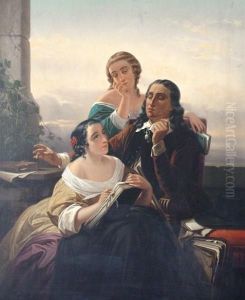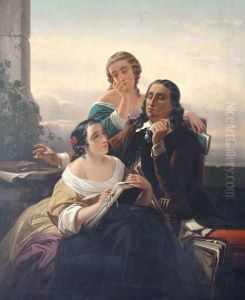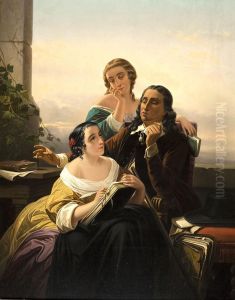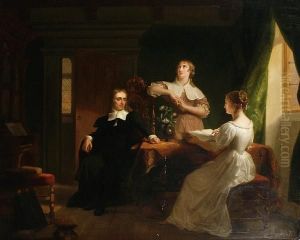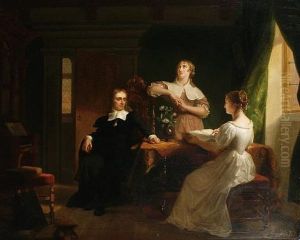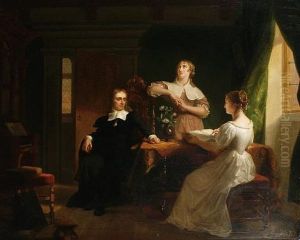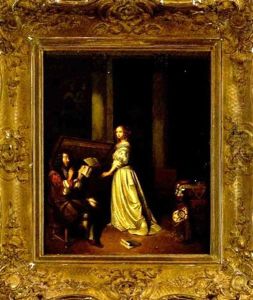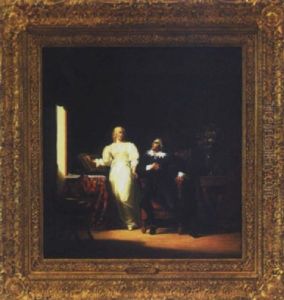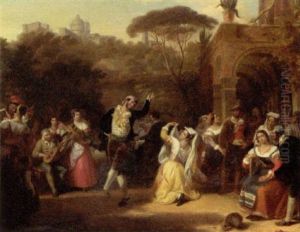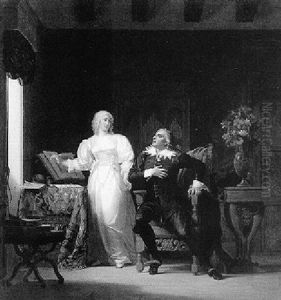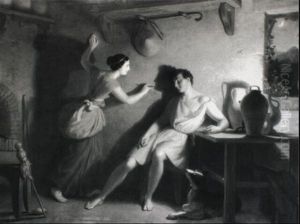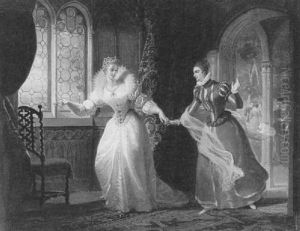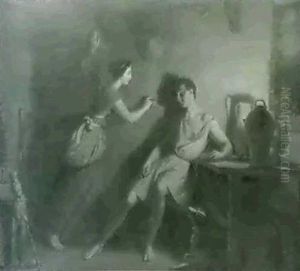Henri Jean Baptiste Fradelle Paintings
Henri Jean Baptiste Victoire Fradelle was a Franco-English painter known for his historical and literary subjects. Born on March 26, 1778, in Liège, which was then part of the Prince-Bishopric of Liège and is now in Belgium, Fradelle developed his artistic talents from a young age. He moved to Paris to pursue his education in art and was a student of the noted French painter Jacques-Louis David, who was a preeminent painter in the Neoclassical style.
Fradelle's career began to flourish during the early 19th century. In 1801, he first exhibited at the Paris Salon, an official art exhibition of the Académie des Beaux-Arts in Paris. His work received some recognition, and he continued to exhibit his paintings at the Salon until 1819. His style was heavily influenced by his teacher David and the broader Neoclassical movement that sought to revive the classical art and culture of Ancient Greece and Rome.
In 1816, Fradelle moved to London, England, where he would spend the remainder of his life. He quickly assimilated into the London art scene, becoming a member of the Royal Academy. He exhibited his work there from 1822 to 1865. Fradelle's paintings often depicted scenes from history, mythology, and literature, reflecting the tastes of the time, which favored grand, narrative-driven works.
While in England, Fradelle enjoyed a successful career as an artist. He was known for his meticulous attention to detail and his ability to convey the emotional depth of his subjects. His works appealed to the Victorian sensibilities of his patrons, and he was commissioned to paint portraits and decorative pieces for stately homes. Despite his success, Fradelle did not achieve the same level of fame as some of his contemporaries.
Henri Jean Baptiste Victoire Fradelle died on March 14, 1865, in London. Although he is not as widely known today as some other artists of his time, his paintings can still be found in art collections and have been exhibited in galleries specializing in 19th-century European art. His contributions to the Neoclassical movement and his work in England during a period of great cultural exchange between France and Britain remain part of his legacy.
